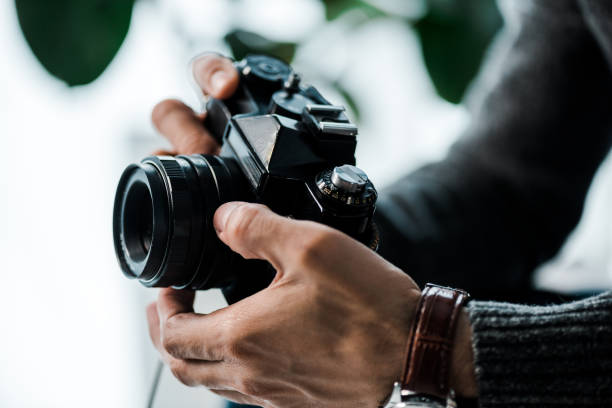Photographer's Guide: Tips And Tricks For Capturing Perfect Shots

Photography is an art that is a passion that requires commitment, dedication and a keen eye for details. A photographer must capture a moment or an amazing landscape and then transform the image into something that can resonate with the spirit of the person who is watching. But mastering photography isn't an easy task. It requires years of training as well as experimentation and lessons from seasoned photographers to sharpen your talents and establish your own distinct design.
The Photographer's guide is a must-have for any interior photography fan) who wants to make their love of photography a profession or hobby. This book is intended to give you the most important tips and tricks for capturing amazing photos that stand out in the mass of photographers. From choosing the right camera and lenses to mastering the technique of composition, lighting, and editing. The book will cover everything you must learn to take the perfect photo.
Making Perfect Images: Tips and Tricks
We will be sharing some helpful tips and tricks for capturing perfect images with your camera or smartphone. These tips can help improve your photography skills, regardless of whether you're trying to improve your photography to use for personal or professional reasons. Editing and lighting, composition and post processing are all crucial aspects of photography.
The right camera, and lenses:
The lens and camera used by a good sport photographer is essential for achieving the result you want. It is essential to understand the capabilities and limitations of the camera. Choosing the right lens to suit the particular situation can affect the end result. For instance, using a wide-angle lens can capture the expansiveness of landscapes and the telephoto lens allows you to zoom in on a subject to create dramatic effects.
The art of composition:
The design of a photograph is the arrangement of objects in the frame. Well-composed photos capture the attention of viewers, inspire emotion and create a compelling story. To master the art of composition, photographers need be aware of the rules of thirds, leading lines, frames, and symmetry. They also have to experiment using different compositions and perspectives in order to find their own unique design.
Understanding lighting:
Lighting is the key component that influences the tone, mood and the appearance of photographs. Photographers must be aware of the different kinds of light, including natural, artificial, as well as ambient, and know the best way to use the lighting to make stunning photographs. Additionally, knowing the three elements of exposure, specifically aperture, shutter speed, and ISO which can assist in controlling the amount of light that enters the camera, and produce the perfect photo with a properly exposed image.
How do you edit your images:
Post-processing can improve even the most well-lit or arranged photos. With the advent of digital technology, editing has become an indispensable instrument for enhancing images' visual appeal to correct mistakes and produce artistic effects. You can improve aesthetics and the quality of your photographs by familiarizing yourself with software such as Lightroom or Photoshop.
Conclusions
A Photographer's Guide is not just a guideline to read. This is a great resource for inspiration and education in addition to a place to meet other people who are passionate about photography. Whether you're just starting or a seasoned photographer, this article will provide you with valuable insights to improve your photography skills and enhance your professional career. Don't forget that capturing an ideal shot isn't simply about having technical knowledge however, it also requires the ability to think and be intuitive. Ansel Adams, the famous Photographer once said that you can't just snap a picture, but create it.
